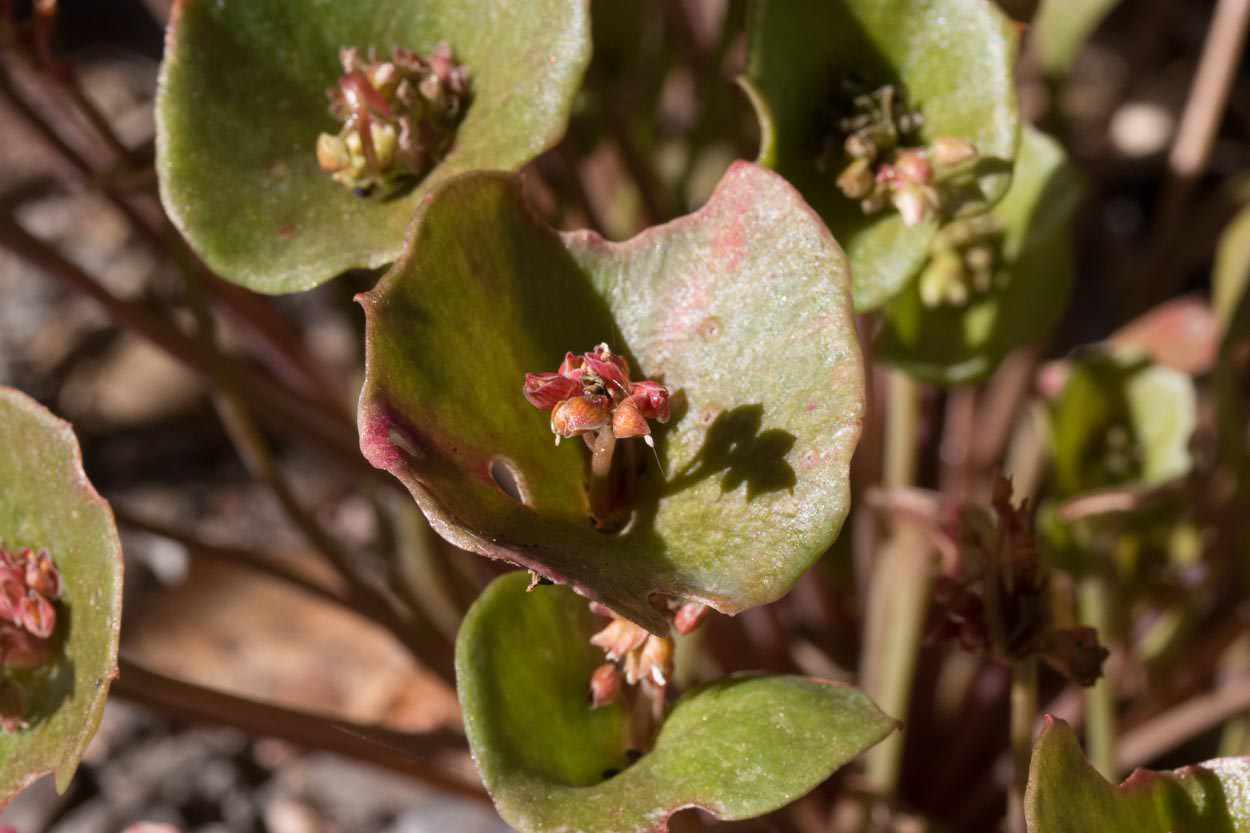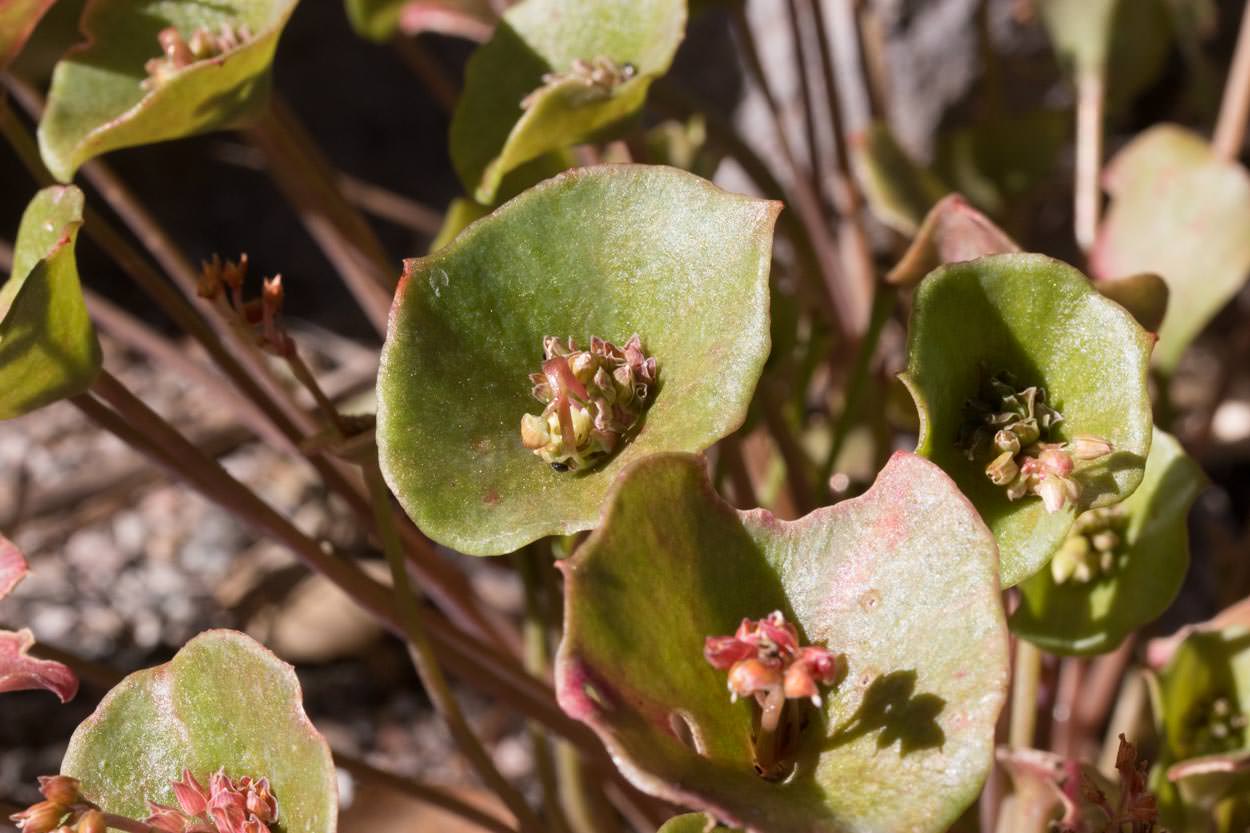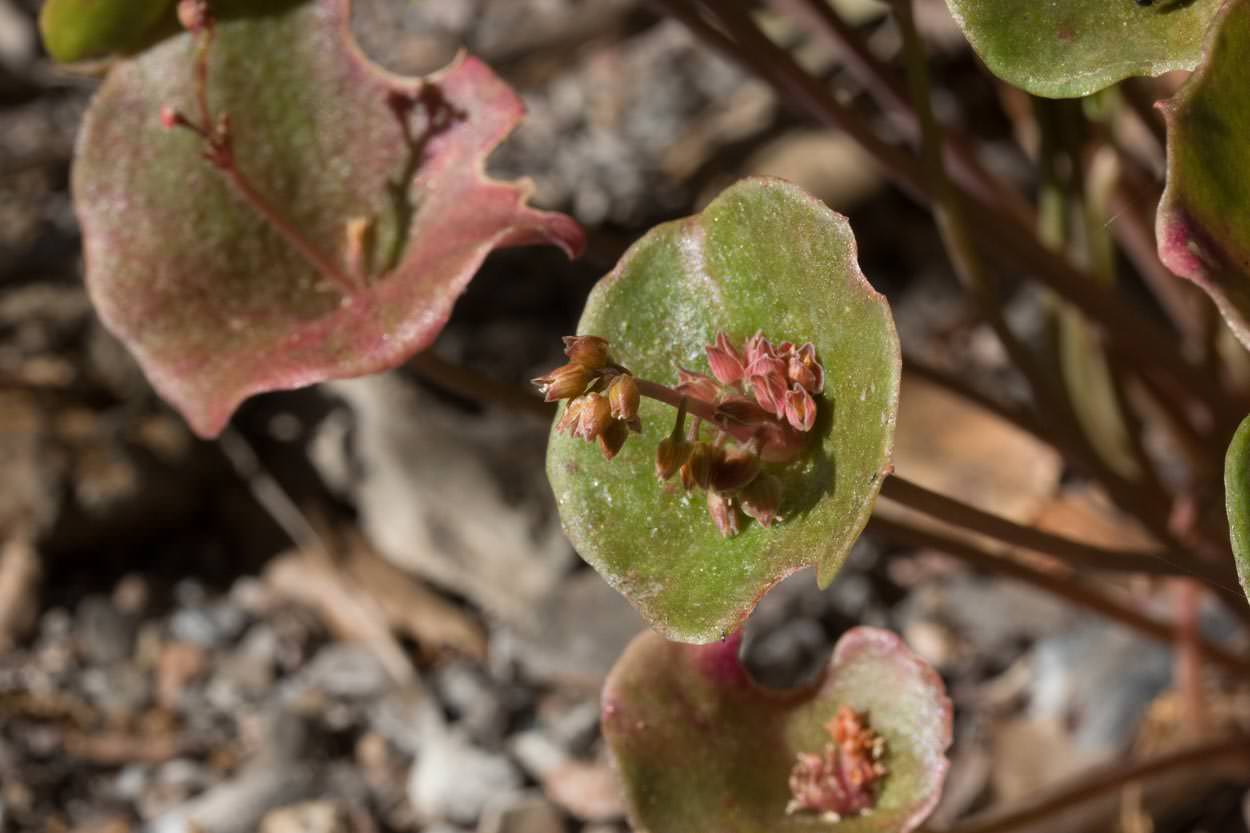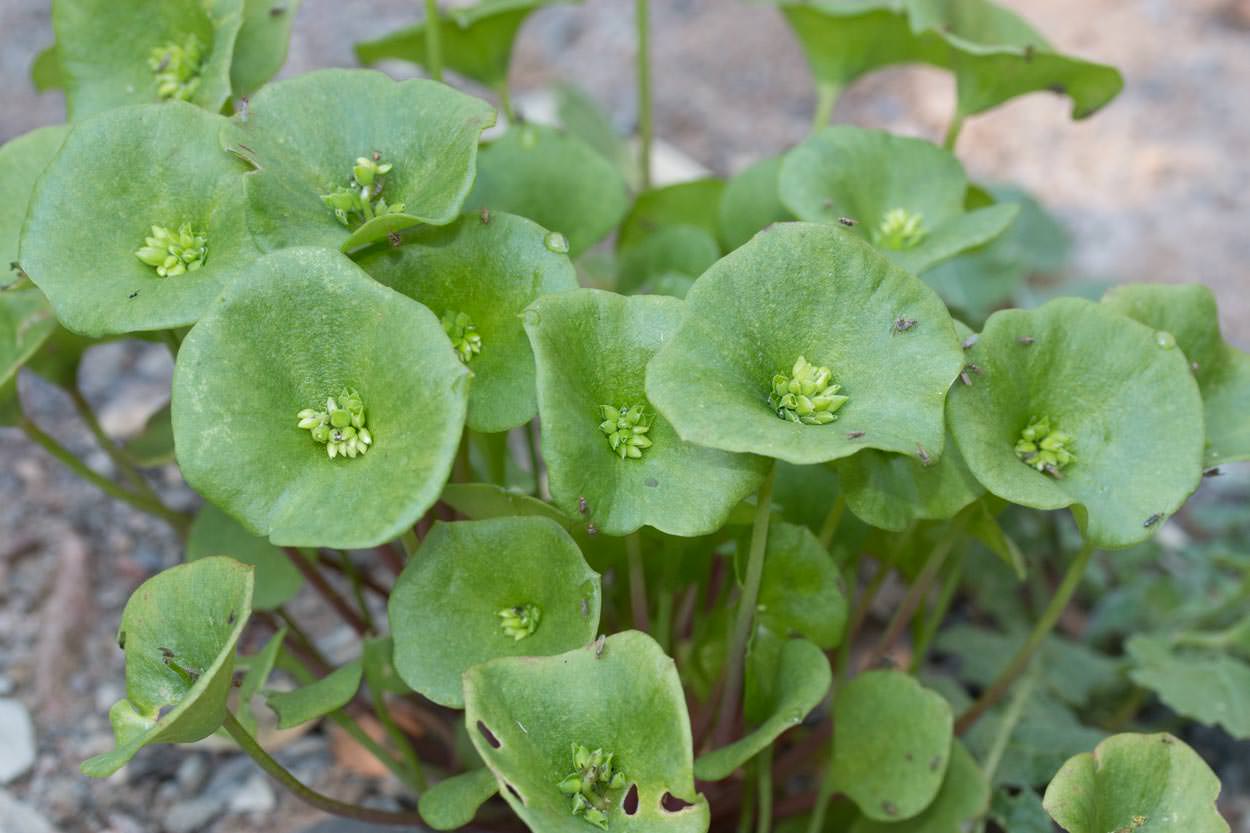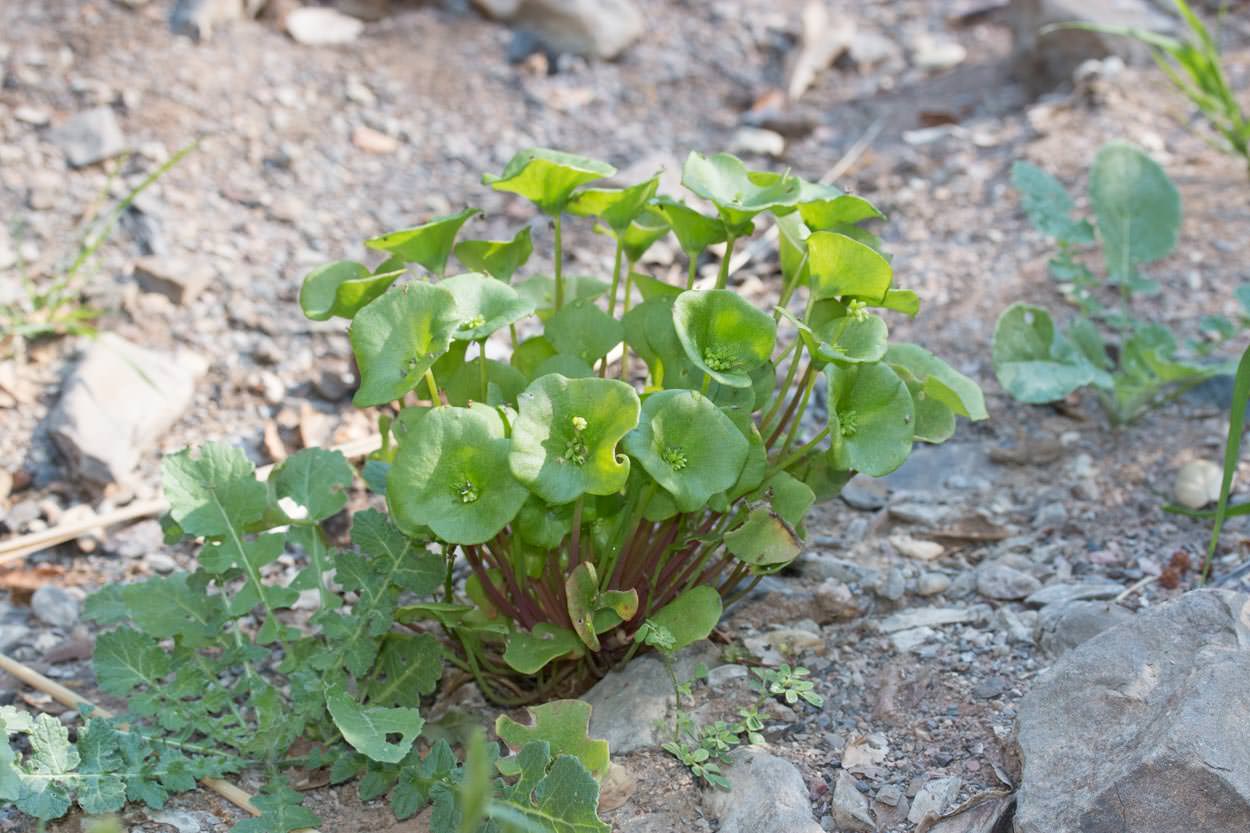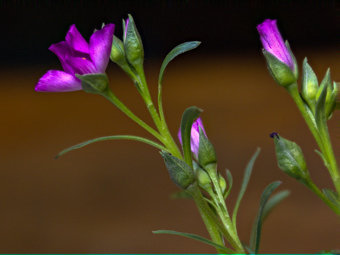Miners Lettuce
- Claytonia perfoliata
| Common Name(s): | Miners Lettuce |
| Scientific Name: | Claytonia perfoliata |
| Family: | Portulacaceae (Purslane) |
| Plant Type: | Annual |
| Size: | up to a foot tall |
| Habitat: | shady areas in chaparral, woodland, sage scrub |
| Blooms: | January to May |
| Fire Response: | Germinate from Seed |
This little plant is a common sight in the spring alongside the trail. While not very showy, the rich green color of its leaves and their distinctive shapes make it easy to identify.
Two types of leaves form on the plant. Lower, somewhat triangular-shaped leaves appear on long stems, followed by its more noticeable upper leaves which are cupped and roundish, sometimes shaped a bit like the letter "B". This symmetry belies that each upper leaf is really made of two leaves joined together. These upper leaves can be up to 3 inches in diameter. A distinguishing feature is how the flower stem appears to pierce through the (conjoined) leaf. Small, 5-petalled white flowers form on the stem's terminus. Flowers bloom from February through May. As the plant declines with the heat and aridity of summer, the leaves turn reddish.
Claytonia refers to 18th century botanist John Clayton. The flower stem emerging through the upper leaf gave the plant its species name, Perfoliata. It is reported that both Native peoples and Europeans ate the leaves; like many greens, they do well in salads or boiled. The taste is said to resemble spinach.
Contributed by Liz Baumann
Featured Plants in the Portulacaceae (Purslane) Family:
Last modified: May 16 2024 20:47:17.
Number of Images: 7
Image Size Total: 892,263
References:
Wildflowers of the Santa Monica Mountains, by Milt McAuleyFlowering Plants: The Santa Monica Mountains, Coastal and Chaparral Regions of Southern California, by Nancy Dale
Chumash Ethnobotany: Plant Knowledge Among the Chumash People, by Jan Timbrook
Leaf Shapes Primer - Botanical Terms for Leaves: - Link


